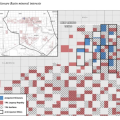- Gold drops after robust US jobs report lowers pressure on the Fed.
- US 10-year T-note yield climbs to 3.971%, while the US Dollar Index hits mid-August highs at 102.58, capping Gold’s rise.
- Geopolitical risks involving Israel and Iran to support Gold, which could hit $2,700.
Gold price retraces after a stronger-than-expected US jobs report hinted that the labor market remains solid and that the Federal Reserve (Fed) will likely ease policy in 25-basis-point (bps) chunks. At the time of writing, the XAU/USD trades at $2,643, down 0.40%.
The US Bureau of Labor Statistics (BLS) revealed that the labor market is far from being in a tough spot following an outstanding September jobs report. The data reduced the pressure on the Fed, which reduced borrowing costs by 0.50% at the September meeting, amid fears of achieving the US central bank maximum employment mandate.
The Unemployment Rate ticked two tenths lower, while Average Hourly Earnings were mixed, with monthly readings decreasing, while in the 12 months to September it rose.
Traders reacted to the data, lifting the US 10-year T-note yield 12 basis points to 3.971%, a level last seen in mid-August 2024. That was one of the reasons that capped Gold prices. The US Dollar Index (DXY), which tracks the Greenback’s value against a basket of six peers, also hit its highest level since mid-August at 102.58, up 0.63%.
The data locked in a 25 bps rate cut by the US central bank at the upcoming November meeting. In fact, a minimal percentage of investors project the Fed will hold rates unchanged.
Next week, the US docket will feature the release of inflation data, jobless claims and University of Michigan Consumer Sentiment.
Chicago Fed President Austan Goolsbee, not a voter in 2024 but one of the most dovish members at the Federal Open Market Committee (FOMC), said that more reports like this “will make me more confident we are settling in at full employment.” He said most Fed officials expect rates to decrease “a lot” over the next 18 months.
Meanwhile, geopolitics will continue to cap the fall in Bullion prices. An escalation of the conflict involving Hezbollah, Iran, Israel and the United States (US) would underpin XAU/USD prices and open the door to challenge $2,700.
Daily digest market movers: Gold price falls amid fading US recession fears
- US Nonfarm Payrolls increased by 254K in September, surpassing the estimated 140K and the upwardly revised August figure of 159K. The Unemployment Rate decreased from 4.2% to 4.1%, lower than expected.
- Average Hourly Earnings in September rose 0.4% MoM, down from 0.5% the previous month but exceeded forecasts of 0.3%.
- Earnings per hour increased by 4% in the 12 months to September, above estimates and August’s number, which was 3.8% and 3.9%, respectively.
- Market participants have disregarded a 50 bps cut from the Fed. The odds of a 25 bps cut are 95%, while the chances for holding rates unchanged are at 5%, according to the CME FedWatch Tool data.
XAU/USD technical analysis: Gold price drops below $2,650, eyeing key technical level below $2,600
Gold’s price consolidated near $2,640-$2,670 for the fifth straight day after the Relative Strength Index (RSI) exited overbought territory. Price action remains range-bound while buyers lose momentum, opening the door for a pullback.
If XAU/USD achieves a daily close below $2,650, look for a drop toward the September 18 high turned support at $2,600. Once surrendered, the next demand area would be the 50-day Simple Moving Average (SMA) at $2,524.
Conversely, for a bullish continuation, the XAU/USD needs to clear $2,670 to have the chance to challenge the year-to-date high of $2,685. Up next will be the $2,700 mark.
Fed FAQs
Monetary policy in the US is shaped by the Federal Reserve (Fed). The Fed has two mandates: to achieve price stability and foster full employment. Its primary tool to achieve these goals is by adjusting interest rates. When prices are rising too quickly and inflation is above the Fed’s 2% target, it raises interest rates, increasing borrowing costs throughout the economy. This results in a stronger US Dollar (USD) as it makes the US a more attractive place for international investors to park their money. When inflation falls below 2% or the Unemployment Rate is too high, the Fed may lower interest rates to encourage borrowing, which weighs on the Greenback.
The Federal Reserve (Fed) holds eight policy meetings a year, where the Federal Open Market Committee (FOMC) assesses economic conditions and makes monetary policy decisions. The FOMC is attended by twelve Fed officials – the seven members of the Board of Governors, the president of the Federal Reserve Bank of New York, and four of the remaining eleven regional Reserve Bank presidents, who serve one-year terms on a rotating basis.
In extreme situations, the Federal Reserve may resort to a policy named Quantitative Easing (QE). QE is the process by which the Fed substantially increases the flow of credit in a stuck financial system. It is a non-standard policy measure used during crises or when inflation is extremely low. It was the Fed’s weapon of choice during the Great Financial Crisis in 2008. It involves the Fed printing more Dollars and using them to buy high grade bonds from financial institutions. QE usually weakens the US Dollar.
Quantitative tightening (QT) is the reverse process of QE, whereby the Federal Reserve stops buying bonds from financial institutions and does not reinvest the principal from the bonds it holds maturing, to purchase new bonds. It is usually positive for the value of the US Dollar.




